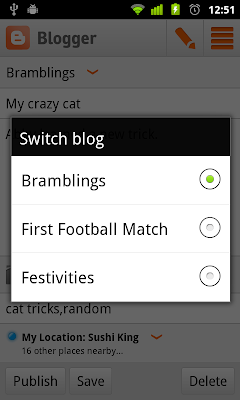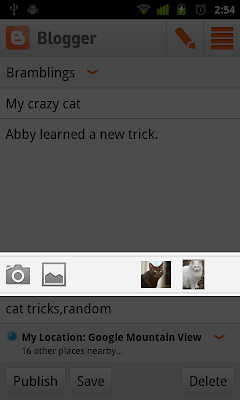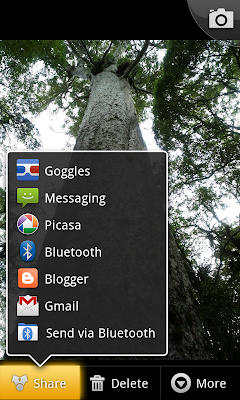I read an article recently about an Australian livestock auction site,
AuctionsPlus, which allows farmers to view, bid on, and transport livestock with the click of a mouse.
It’s a unique kind of online shopping, but one that I can imagine in a country as big as this one, makes a big difference to farmers, who can now buy stock from their smartphones in the back paddock and avoid a three or four day round trip to the stockyards.
The digital economy can be a nebulous concept and while there’s lots of talk about it - much of this is in future tense. What makes the sheep auction site fascinating to me is that it epitomises beautifully the digital economy.
It’s using the Internet as a platform for industry. It’s innovating. And it’s happening now.
The digital economy is a platform for growth for the entire Australian economy. Industries old and new are moving online, and finding new ways to do business. This is true for tech companies -- Australian start-ups like
Atlassian are growing up -- but it is equally true for companies working in more traditional industry sectors, too. From health and education, to tourism and manufacturing, to resources and energy, and for businesses large and small, companies who are moving into this space are statistically more successful: recent UK research reported that small businesses who leverage the internet report sales growth four times greater than those who don’t.
The digital economy connects Australia to the global movement online; but it’s also specifically valuable for Australia. It allows Australia to confront the challenges of the tyranny of distance by connecting us to the rest of the world in real-time. And it takes advantage of our strengths -- particularly our highly skilled, net-savvy and innovative population -- and keeps them at home, rather than shipping them overseas. Over twenty years ago I left Australia to work in Japan and then in Silicon Valley in the US: young engineers at Google can now work on global platforms while looking out the window at the Sydney Harbour Bridge.
If you’ll permit me to labour my agricultural analogy for a minute, consider the digital economy as the farm of the future. Generations of Australian farmers have worked the land to build an agricultural sector that more than a century on is still a significant economic contributor. The digital economy is a platform that can support this and other sectors of our economy to grow into the future -- it’s a platform for future-proofing our economy. But like the land, we can keep planting but we need all of the elements to work together for a bumper crop.
1. We need to improve the soil qualityIf any country knows about the importance of soil quality, Australia does. You need healthy soil for a garden to grow, and we need world-class infrastructure to anchor our digital economy. The ubiquitous, high-speed broadband of the National Broadband Network will position Australia well to grow the digital economy and to enable a range of innovations and opportunities which would be limited by out-dated infrastructure.
2. We need to water the cropIn the same way that we fund scientists to research new medicines and treatments, we need to support new ideas and new innovations in the digital space with finance, in the form of venture capital and private sector investment. There’s an absence of ‘smart money’ in Australia to support new start-ups here -- ‘smart money’ is venture capital that comes with the added value of advice, experience and contacts. Funding isn’t the only thing a start-up needs to succeed, but it’s critical to getting a good idea off the ground.
3. We need to feed our cropYou can fund all the good ideas in the world, but you need people to have the good ideas in the first place. Strong universities capable of effectively partnering with industry are critical to a vibrant ecosystem. For example, the Massachusetts Institute of Technology (MIT) has
calculated that their alumni have founded more than 25,000 companies with a combined annual revenue of more than USD2 trillion. Australia has some excellent universities but we can do much more to develop the relationships between the university sector and industry to support the commercialisation of ideas developed in universities -- from classroom to customer -- and we must continue to support and inspire students pursuing education in the fields of science and maths.
4. We need to refresh our seed stockThe interchange of people and ideas stimulates innovation. Large companies need start-ups to partner with, and conversely small companies need larger companies to reach customers, and to grow with. Large international companies should also be encouraged to invest in the digital economy here, in skills and in research, to further seed new ideas and new collaborations.
5. It needs oxygen to growAnd we need keep the Internet open. The Internet thrived because it is open -- with engineers being able to build on each other's work, each iteration improving, and driving the web forward as a whole. To flourish, the web needs oxygen; online, oxygen is openness. As
Tim Berners-Lee said recently, the whole idea behind the internet was that ‘any person could share information with anyone else, anywhere.’ Online, the fastest way to move things forward is to share and iterate -- again, and again. Closed systems are all or nothing bets -- but in contrast, an open web is constantly being improved upon by the entire community. It gives oxygen to innovation.
6. We need to tend the cropThe lines in the middle of the road weren’t necessary when we travelled on horseback, but when we started driving cars we adapted. We came up with a simple and practical solution which greatly improved road safety: the road line. Online, we need to adapt to the changed environment; we need to evolve the rules of the road. We need to ensure privacy, safety and security are respected in this new environment, but we should look for the best ways to do this that fit the environment. We need to empower people with the skills and knowledge to be safe, smart and responsible when they’re online, so everyone can navigate the information super-highway with safety.
Our digital economy crop is growing well, but it’s early in the season. If we create the right conditions for growth, Australia’s digital economy can look forward to many bumper crops to come."
Alan Noble, Director of Engineering, Google Australia & New Zealand.Originally posted at ITNews. Cartoon courtesy of ITNews.
















